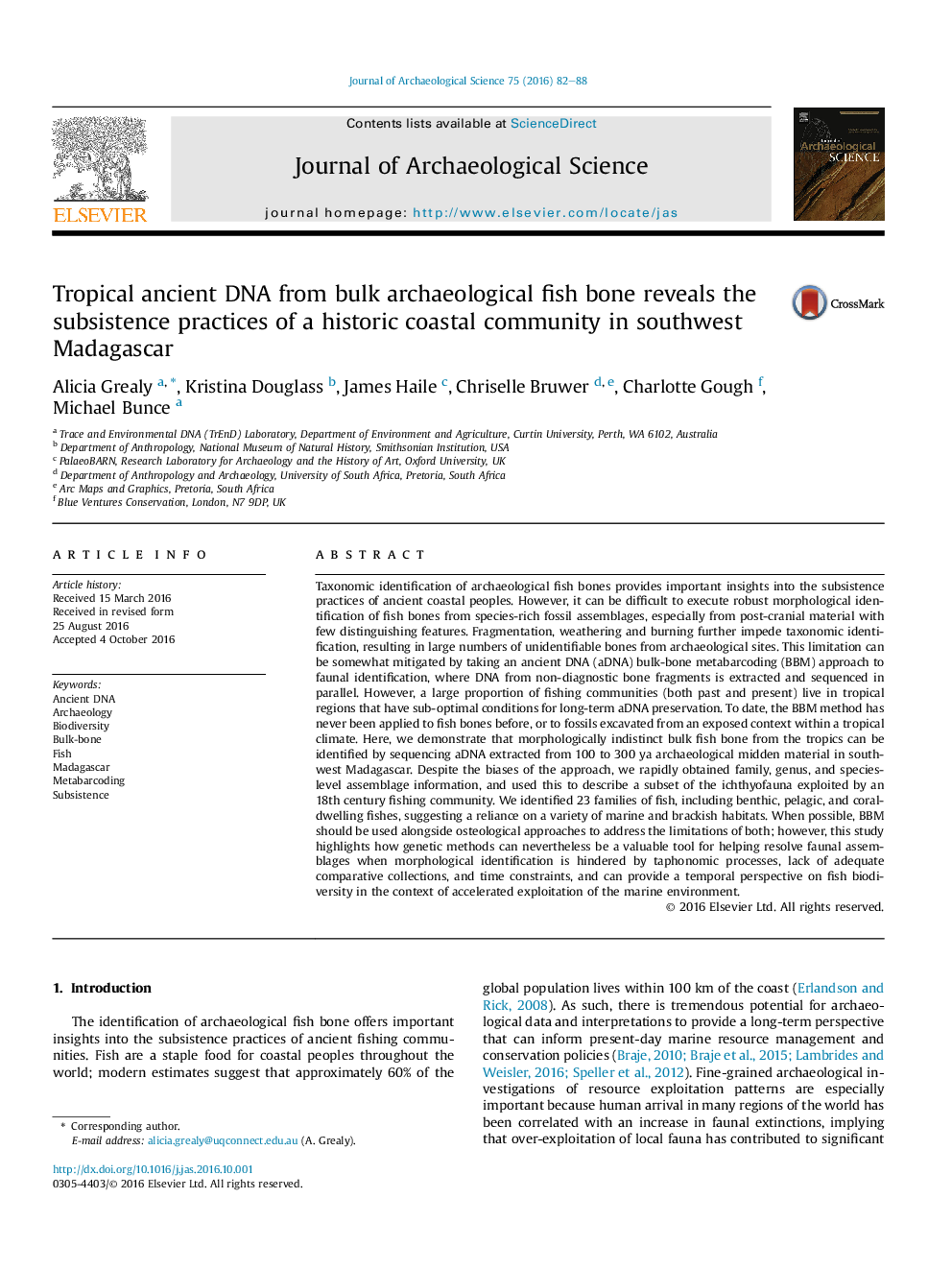| کد مقاله | کد نشریه | سال انتشار | مقاله انگلیسی | نسخه تمام متن |
|---|---|---|---|---|
| 5112119 | 1483885 | 2016 | 7 صفحه PDF | دانلود رایگان |
عنوان انگلیسی مقاله ISI
Tropical ancient DNA from bulk archaeological fish bone reveals the subsistence practices of a historic coastal community in southwest Madagascar
دانلود مقاله + سفارش ترجمه
دانلود مقاله ISI انگلیسی
رایگان برای ایرانیان
کلمات کلیدی
موضوعات مرتبط
مهندسی و علوم پایه
مهندسی مواد
دانش مواد (عمومی)
پیش نمایش صفحه اول مقاله

چکیده انگلیسی
Taxonomic identification of archaeological fish bones provides important insights into the subsistence practices of ancient coastal peoples. However, it can be difficult to execute robust morphological identification of fish bones from species-rich fossil assemblages, especially from post-cranial material with few distinguishing features. Fragmentation, weathering and burning further impede taxonomic identification, resulting in large numbers of unidentifiable bones from archaeological sites. This limitation can be somewhat mitigated by taking an ancient DNA (aDNA) bulk-bone metabarcoding (BBM) approach to faunal identification, where DNA from non-diagnostic bone fragments is extracted and sequenced in parallel. However, a large proportion of fishing communities (both past and present) live in tropical regions that have sub-optimal conditions for long-term aDNA preservation. To date, the BBM method has never been applied to fish bones before, or to fossils excavated from an exposed context within a tropical climate. Here, we demonstrate that morphologically indistinct bulk fish bone from the tropics can be identified by sequencing aDNA extracted from 100 to 300 ya archaeological midden material in southwest Madagascar. Despite the biases of the approach, we rapidly obtained family, genus, and species-level assemblage information, and used this to describe a subset of the ichthyofauna exploited by an 18th century fishing community. We identified 23 families of fish, including benthic, pelagic, and coral-dwelling fishes, suggesting a reliance on a variety of marine and brackish habitats. When possible, BBM should be used alongside osteological approaches to address the limitations of both; however, this study highlights how genetic methods can nevertheless be a valuable tool for helping resolve faunal assemblages when morphological identification is hindered by taphonomic processes, lack of adequate comparative collections, and time constraints, and can provide a temporal perspective on fish biodiversity in the context of accelerated exploitation of the marine environment.
ناشر
Database: Elsevier - ScienceDirect (ساینس دایرکت)
Journal: Journal of Archaeological Science - Volume 75, November 2016, Pages 82-88
Journal: Journal of Archaeological Science - Volume 75, November 2016, Pages 82-88
نویسندگان
Alicia Grealy, Kristina Douglass, James Haile, Chriselle Bruwer, Charlotte Gough, Michael Bunce,